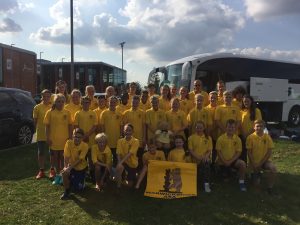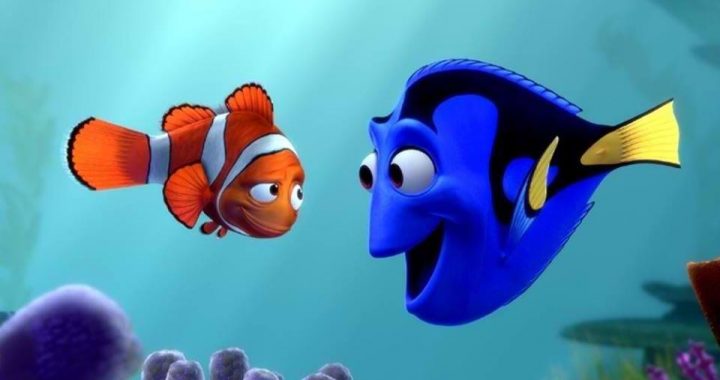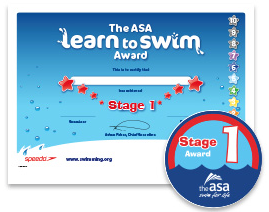Using the wrong technique during stretching can waste your time and increase your risk of injury. Be aware of the fact that when you stretch a muscle, you will also perform at least one action that is directly opposite to what the muscle does as it works (contracts).
If the function of the muscle is to bend the elbow, you need to straighten the elbow in order to stretch it. If a muscle flexes the hip, straightens the knee, or increases the arch in your lower back, in order to achieve a stretch, you need to extend the hip, bend the knee, or lessen the arch of the back. Performing only one of these actions will not yield the desired stretch. It can also increase the mobility in the joints too much, which can lead to injury. Follow the instructions for stretches closely in order to exercise effectively and safely.
Four Main Principles
To stretch safely, you must adhere to the four main principles of avoiding pain, stretching slowly, stretching the right muscle, and working only the necessary joints and muscles. These guidelines are designed to make your stretching safer and more effective and to increase your awareness of your body.
Avoid Pain
If you stretch carefully, your muscles will react in the desired manner. If you force the stretch, your muscles will not want to cooperate. If you stretch to the point of pain, your body’s defense mechanisms will kick in, thinking something dangerous might be going on. When muscles register pain, they try to protect themselves by contracting. This is the opposite of you want to achieve by stretching. Of course, very slight pain during a stretch can feel good if the discomfort does not spread to the body. However, you must be able to distinguish between the burn of stretching and pain that will lead to an injury.
Stretch Slowly
If you throw your arms or legs out during the stretch, the muscle will stretch too fast. This makes the body think that the muscle is about to get torn or injured. Once again, it will try to protect the muscle by contracting it, preventing you from reaching your goal.
Stretch the Correct Muscle
Although this might sound obvious, you must use correct technique in order to follow this rule. Movement that goes a couple of degrees in the wrong direction can mean the difference between stretching the muscle and pulling on the joint capsule or similarly harming the body. To save your body and valuable time, it is important to do things right!
Avoid Affecting Other Muscles and Joints
Stretching that is careless or poorly done can negatively affect other muscles and joints, actually worsening your condition. This common mistake is the main reason why some people consider stretching worthless or painful.
The Golden Rule
Stretching correctly demands good technique and practice. As in any other discipline, practice makes perfect. Make sure that all your angles are correct as you start the movement. You must move with the right speed and with the right posture. Your focus should be moving the joint as little as possible as you stretch the muscle. Human nature is to take the path of least resistance, which makes us feel flexible and comfortable. However, this approach is not the way to get a good stretch.
Considerations
Should you stretch when warm or cold?
Most people feel more comfortable and flexible when they are warm. However, can you stretch without warming up first? If you follow the basic guidelines on stretching, you will not risk an injury. It can be difficult and impractical to warm up every time if you are trying to correct a condition that requires you to stretch 10 times a day.
Should you stretch before or after a workout?
If you work out to feel good and to stay fit, it is fine to stretch before, after, and even during a workout. If you lift weights, it may help to stretch both the muscle that you are working as well and its antagonist. If the antagonist is flexible and pliable, the stretch will be easier and the risk for injury will decrease. Stretching the calves during a run can help avoid injury, since tight, shortened calf muscles often affecting your stride.
Make it a part of your day.
Maximizing the effect of your stretches should be part of your daily habits, just like brushing your teeth or showering. Your muscles need frequent maintenance as well. This is especially true if you suffer from problems related to tight or shortened muscles. Although you might feel silly stretching at work, it can help you avoid getting headaches or throwing your back out. An employer who really cares for his employees will allow for stretching breaks in the morning and afternoon.
What do you need to be able to stretch?
You don’t really need any equipment to be able to stretch. Stretching exercises can be done at home, at work, or at the gym. A wall, a table, a phonebook (to stand on), a towel, or an ironing board all work well as equipment.
Performance
Several methods for stretching exist, but the basic idea is the same. Stretches should elongate the muscle. The safest and most effective approach is the PNF (proprioceptive muscular facilitation) method, also called contract-release.
This method is based on tricking the body’s own defense mechanism. First, stretch the muscle until it starts to work against you, and your body sends a message to the muscle to tighten up and defend itself. As you hold the position, the muscle will dismiss the possibility of danger and the body will relax again.
You can also voluntarily tighten the muscle to calm the body’s defenses. The PNF method is designed to make sure that your body does not fight the stretch. Adhere to the four basic principles for the greatest benefit.
Steps of the PNF Method
The PNF method can be split into six parts:
1. Assume the correct starting position.
2. Stretch until you reach the ending point.
3. Relax.
4. Tighten the muscle without moving it.
5. Relax.
6. Stretch to the new ending point.
Repeat the last four steps three to six times, depending on the exercise and your goals.
Ending Point
An ending point is a position from which the movement stops for any reason. Certain ending points are movable and others are set. Whenever you stretch a muscle, you will reach an ending point sooner or later. You may stop when you feel a sting or pain in the muscle. The movement may also be stopped by soft tissue (muscle and skin) or bony parts running into each other. During the PNF method, an ending point is reached when you feel a light sting in the muscle. If you reach a different kind of ending point, you need to stop the movement to correct your technique or possibly take a break from stretching that muscle. Certain stretches cannot be performed unless other muscles have been stretched first.
Starting Position
Without the correct starting position, whether standing, sitting, or lying down, it is impossible to stretch effectively. For this reason, you need to spend time learning this position before moving on to the rest of the stretch. If the starting position for a stretch is difficult, you might want to use a mirror or have somebody check your posture.
Stretching
During the stretching phase, you try to elongate the muscle until you feel a light sting. Naturally, the stretch should be done slowly and with control in the right direction to be effective (to prevent activating the body’s defense systems).
Relaxation
During the relaxation phase, you simply hold the position at the ending point while relaxing the muscle as much as you can. At this point, you are trying to reduce the body’s attempt to tighten the muscle. If you are actively able to relax, the stretch will be more effective.
Contraction
This is another method for distracting the body in order to fool its defenses. You will contract the muscle being stretched against some form of resistance (your own hand, the floor, or the wall) in order to prevent movement. Contracting without moving further disarms the body’s defense system. During this phase, the light sting you felt in the previous phase should diminish or disappear. If the pain increases instead, you went too far in the initial stretching phase. If you did everything right, you will now feel able to stretch again until you reach a new ending point.
This article was excerpted from Prescriptive Stretching, which incorporates large and easy-to-use full-color anatomical illustrations to demonstrate exactly how to relieve soreness and imbalances in a targeted way. By using the 40 stretches in PrescriptiveStretching, readers can reduce their risk of injury and relieve unwanted pain.
Learn more at http://www.HumanKinetics.com
 The girls 10 year old relay team (Kianna Hughes, Kadijah Cox, Carys Higgins and Sophie Mason); Harvey Higgins – who won both the 12/under Breaststroke and Freestyle in impressive style; the girls 10 year old Freestyle relay team (Kianna Hughes, Kadijah Cox, Carys Higgins and Sai Ashman); Carys Higgins (10/under Backstroke); The Boys 12/under relay team (Ellison Hart, Harvey Higgins, Lewis Carless and Vinaye Gaddu) who won both the Freestyle and Medley relays.
The girls 10 year old relay team (Kianna Hughes, Kadijah Cox, Carys Higgins and Sophie Mason); Harvey Higgins – who won both the 12/under Breaststroke and Freestyle in impressive style; the girls 10 year old Freestyle relay team (Kianna Hughes, Kadijah Cox, Carys Higgins and Sai Ashman); Carys Higgins (10/under Backstroke); The Boys 12/under relay team (Ellison Hart, Harvey Higgins, Lewis Carless and Vinaye Gaddu) who won both the Freestyle and Medley relays.









